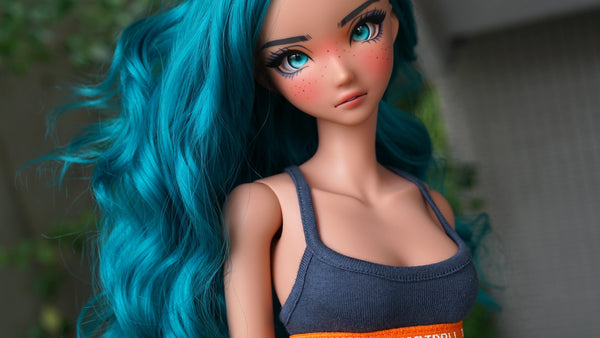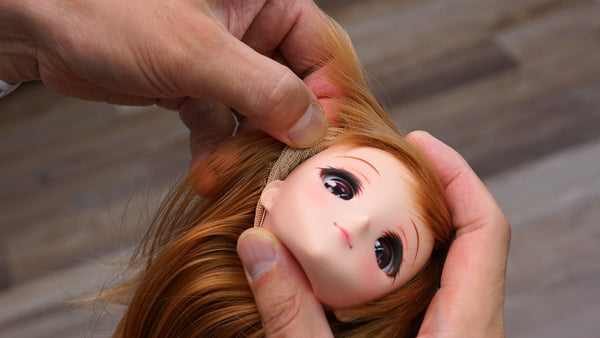While our Knowledge Base includes a general article about wig characteristics, we’ve created this separate guide specifically for Braided Wigs due to the additional complexity involved in their production. The structure and behavior of this style differ significantly from our single-strand wigs, and we want to ensure expectations are clear.
Image 1 – Braided wigs are not wrapped in a wig net like our other wigs. This is because the tips of each braid can have irregular shapes that may snag on the net during unpackaging, leading to fraying. The ends can also catch on clothing or even dry skin around fingernails.
Unlike our single-fiber wigs, you won’t be able to run your fingers through a braided wig—doing so may cause the braid tips to catch on each other, stopping your fingers from gliding through smoothly.
Also note that, as with our single-fiber wigs, your hands may feel slightly oily or tacky after handling the wig. This is due to the styling products used during the production process.
Image 2 – The wig cap is intentionally smaller than those used in our other styles and is constructed specifically to support the weight and structure of the braids. It does not include strong elastic like our other wigs, which also makes it a bit easier to attach.
The cap is black rather than dark brown to better blend with the braids if exposed—depending on how the wig is styled. However, the dark color may cause staining on the head, which might not be an issue for those who usually keep their dolls wigged.
Image 3 – The cap is intentionally not packed full of braids in order to maintain a silhouette that complements the doll’s proportions. This helps prevent the wig from looking bulky, though the cap may be visible from certain angles.
Image 4 – Each wig is made from an estimated 30,000 fibers. It’s not feasible for us to trim each one individually, so some stray fibers may be present out of the bag. These can be carefully trimmed for a cleaner look and do not affect the integrity of the braid.
Image 5 – While we remove as many loose threads as possible during styling, a few may be left intentionally. We intentionally leave some threads untrimmed during styling, as cutting them could risk the wefts coming undone.
This image also demonstrates the importance of pulling the wig cap down firmly so that it stretches as close to the ears as possible. If not properly fitted, the cap may spring off the head—possibly into someone’s ice cream. Due to the construction of this style, it doesn’t grip as securely as our single-fiber wigs.
Image 6 – To prevent fraying, each braid is individually heat-sealed using a heat gun or lighter. This slightly melts the end of each braid, resulting in a rounded or irregular tip. Some stray fibers may remain visible even after sealing, but they can be trimmed if desired.
Image 7 – Unlike non-braided wigs—where tugging on a fiber typically pulls out a single strand—pulling on a fiber within a braid can cause the entire braid to implode. This can usually be repaired using a hair iron to re-melt and reset the braid, or by trimming and resealing the end.
Image 8 – Due to the thickness of each braid, the parting line will not be as uniform or flat as it is with single-stranded wigs.
Image 9 – Because the long braids are curled during packing, the wig may retain a curl halfway down. This can be straightened over time with gravity, or sped up by gently warming the braids with a hairdryer.
Image 10 – Depending on your styling, some braids may fall over the face and not stay in place. If this happens, you can use a simple braid wig hack: tuck part of the braid under the wig cap (as shown in Image 11) to hold it in position.
Image 12 – We’ve been developing this wig style for many years and are proud of the result. However, we understand that some of its unique traits may be seen as flaws by some. If that’s the case, we strongly advise against purchasing dolls that come with this wig.
As with any heat-based tools or instruments, please take care not to burn yourself or anything nearby—and definitely don’t set anything on fire.




 While the head and hands will be vinyl - you have a choice of two different types of body - one is referred to as Cortex and the other as Vinyl. Both body types are pre-built.
While the head and hands will be vinyl - you have a choice of two different types of body - one is referred to as Cortex and the other as Vinyl. Both body types are pre-built.